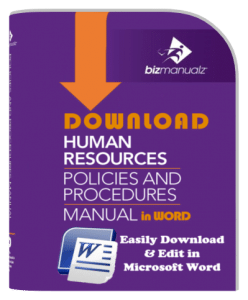How Can the Onboarding Process be Improved?

The process of onboarding new employees in your company can be exciting. A new employee’s onboarding may significantly impact their drive and productivity, but it does not always go smoothly. How can the onboarding process be improved?
6 Ways to Improve New Hire Onboarding Process
The onboarding process is a time to make a lasting impact on your new recruits as they learn the foundations of their new roles. Orientation and training of new staff is an integral part of any company’s success.
Therefore, you must ensure your company implements the best onboarding practices. However, the techniques used for onboarding are advancing every day, and you need to improve constantly. This post has compiled the six best ways to improve your company’s onboarding process.
1. Take a Proactive Approach to Onboarding
Enhancing your staff onboarding process is one of the most excellent ways to enhance your onboarding process. Start interacting with the employee immediately; don’t wait until their first day. Instead, start the process early by exchanging emails before the commencement date. Employees will feel less overwhelmed on their first day of work.
For instance, you may send the employee’s welcome email before their start date along with new-hire papers and valuable information like what to dress, what to bring, and a new-employee onboarding checklist. By providing them with this information in advance, you can make your new team members feel more ready and give them a stress-free start with your business.
2. Give a Suitable Orientation
Onboarding and orientation are often treated as though they are the same thing, but this is untrue. Before starting the onboarding process, personnel should be thoroughly oriented; therefore, orientation should be devoted to guaranteeing this. For instance, orientation should consist of:
- A visit to the building’s restrooms, parking, kitchen, conference rooms, and break spaces
- A concise summary of the purpose and objectives of the firm
- Access to a current firm organizational chart
- A discussion on the expectations, etiquette, and workplace culture
Remember that the onboarding process should not be entirely comprised of the orientation phase, which includes administrative activities like completing new-hire documentation. Remember to include your (new) remote staff as well! You may use screen-sharing tools for more than just virtual office visits.
3. Make an Onboarding Plan and Stick to It
The notion that onboarding would only take a few days is one that most businesses work under. Onboarding is a lengthy procedure that takes up to 12 months, including management and other staff members. Ensure your plan covers the 12 months, not just the first week.
Consider developing a 90-day plan in which you spelled out exactly what you expected of each recruit during their first three months on the job. This clarifies expectations for the recruit and compels management to consider what excellent performance entails. After 20 days and once again after the 90-day term, assess the plan’s effectiveness.
Furthermore, it would help to utilize technology to help streamline certain processes. For instance, HR tools such as employee time clock software can help keep accurate time and attendance as well as streamline payroll processes.
4. Utilize the Fundamentals

Now you can write your company’s Human Resources Department Operations Manual quickly and easily using Bizmanualz time tested Microsoft Word HR Policies and Procedures Manual Word Templates.
Make sure staff get off to a strong start right away. Don’t overwhelm them with administrative chores and heaps of documentation from new hires. This type of job is not enjoyable for a new employee on a day they should be having fun.
So that you have time to concentrate on the most crucial aspects of the onboarding process, have these processes set up and ready to go before the recruit comes. This method is beneficial.
5. Get Coworkers Ready for Their Arrival
New employees find this work unappealing on a day when they should be having fun. Inform them of the position they will be taking on and urge them to provide a warm welcome to the recruit. Email introductions are fine, but face-to-face meetings are significantly more powerful.
If at all feasible, schedule meetings with key personnel so that you may get to know one another better. Plan a lunch date with their immediate boss and think about setting up appointments with other senior managers. New employees feel better integrated into the organization if given the time to get to know the team.
6. Provide the Right Training
It is hard for a recruit to enter their new position knowing all they will need to succeed. Setting up a training program is essential for new hires to settle in a business. This training should follow work obligations and corporate rules to help employees understand their daily tasks.
Improve New Hire Onboarding Process
You may pinpoint areas in your onboarding process that you can improve based on your results to alter the new employee engagement at your company. Implementing these six suggestions can make the employee onboarding process for recruits more engaging and individualized.















Leave a Reply